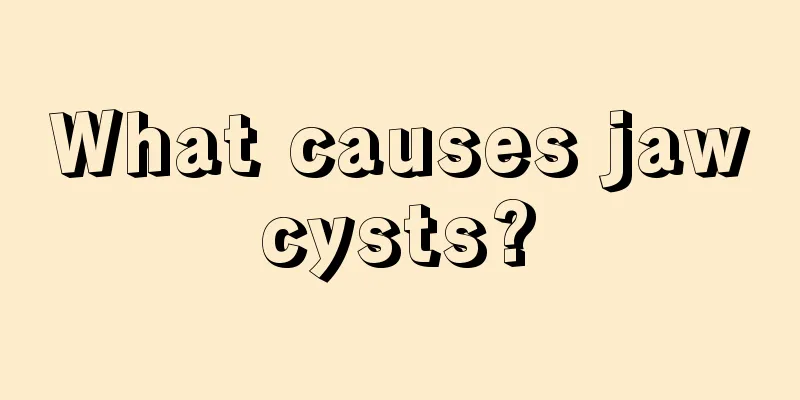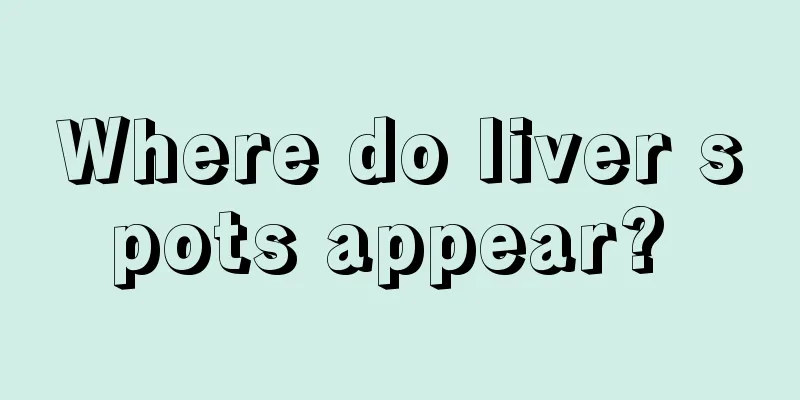What causes jaw cysts?

|
In fact, don’t panic too much when a cyst appears in the jaw. As long as the disease is discovered in time, the treatment is relatively simple. There are generally several causes of jaw cysts, such as apical granuloma, chronic inflammation, enamel inflammation, etc. Patients with jaw cysts will have obvious lumps in the affected area, and they can seek medical treatment in time. Causes (A) Odontogenic jaw cyst Odontogenic jaw cyst occurs in the jaw and is related to odontogenic tissue and teeth. According to their sources, they are divided into the following categories: 1. Apical cysts are caused by the stimulation of apical granulomas and chronic inflammation, which lead to the proliferation of residual epithelial cells in the periodontal ligament. The center of the proliferative epithelial mass undergoes degeneration and liquefaction, and the surrounding tissue fluid continues to seep out, gradually forming a cyst, so it can also be called a periapical cyst. 2. Primordial cyst Primordial cyst occurs in the early stage of the development of the enamel organ, before the formation of enamel and dentin. After inflammation or injury stimulation, the stellate reticular layer of the enamel organ degenerates, and fluid exudes and accumulates in it to form a cyst. 3. Dentigerous cyst Dentigerous cyst, also known as filtering vesicle cyst, occurs after the formation of the crown or root of the tooth. Liquid exudates between the residual enamel epithelium and the crown surface to form a dentigerous cyst. It can come from one tooth germ (containing one tooth) or from multiple teeth. Dentigerous cyst is one of the most common odontogenic jaw cysts, accounting for 18%, second only to apical cyst. 4. Odontogenic keratocyst Keratocyst originates from the original tooth germ or dental lamina remnants, and some people believe that it is the primordial cyst. Keratocysts have typical pathological manifestations. The epithelial and muscle fiber capsules of the cyst wall are relatively thin, and the fibrous capsules of the cyst wall sometimes contain daughter cysts (or satellite cyst cavities) or epithelial islands. The cyst contains white or yellow keratinized or greasy substances. It accounts for 9.2% of odontogenic jaw cysts. (ii) Non-odontogenic cysts Non-odontogenic cysts develop from the residual epithelium during embryonic development, so they are also called non-odontogenic ectodermal epithelial cysts. 1. Bulbomaxillary cyst occurs between the maxillary lateral incisor and canine, and the teeth are often squeezed and displaced. X-rays show that the cyst shadow is between the tooth roots, not at the root apex. The teeth have no caries or discoloration, and the pulp is vibrant. 2. This palatal cyst is located in or near the incisive canal (derived from the residual epithelium of the incisive canal). On X-ray films, the shadow of the cyst with enlarged incisive canal can be seen. 3. Median cyst is located behind the incisive foramen and anywhere in the mid-palatal suture. On X-ray films, round cystic shadows can be seen between the sutures. It can also occur in the midline of the mandible. 4. Nasolabial cysts are located at the base of the upper bed and in the nasal vestibule. It may come from the remnants of the nasolacrimal duct epithelium. The cyst is on the surface of the bone. There was no bone destruction on the X-ray film. The presence of a cyst can be palpated on the lateral side of the oral vestibule. |
<<: What should I pay attention to if I have anorectal cyst?
>>: What is the cause of meniscus cyst?
Recommend
Which brand of lutein is good
Lutein is mostly found in vegetables. In daily li...
Nursing diagnosis measures for bladder cancer
Bladder cancer is a serious disease and many pati...
What are the dietary requirements for teratoma
What are the dietary considerations for teratoma?...
Is it good to take detoxifying and beauty capsules for a long time?
Having smooth and soft skin is the dream of many ...
How to take care of yourself when you have fibroids
How to take care of fibroids? For fibroid disease...
What are some ways to make your hair more fluffy?
In daily life, both men and women are very concer...
Liao Zao's method
Laozao is also called glutinous rice wine in some...
Does skin cancer spread quickly in the elderly?
Does skin cancer spread faster in older people? 1...
What to do if your hair is dry and frizzy
Dry and frizzy hair is actually a common problem,...
Uneven fatty liver treatment method
Uneven fatty liver has a serious impact on the pa...
How to care after osteosarcoma surgery
Osteosarcoma is a common malignant tumor disease ...
What are some tips for relieving hot and cold tooth pain?
Generally speaking, teeth can withstand relativel...
Will the right aortic arch heal itself?
Right aortic arch is a relatively serious disease...
What is gonorrhea, its prevention and diet
Gonorrhea is a disease in which gonococci cause i...
How to take care of calcified thyroid nodules
The thyroid gland is a very important endocrine g...









